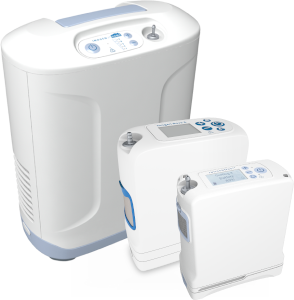What Is COPD?
Many people wonder, “What does COPD stand for?” and it is helpful to understand what COPD is in medical terms. Chronic obstructive pulmonary disease, or COPD, is a long-term lung disease that makes breathing difficult. COPD includes chronic bronchitis and emphysema. This is the American Lung Association’s COPD definition, and their COPD Fact Sheet is an excellent resource for everything related to COPD. This fact sheet should be a reference for people who currently have COPD, could potentially be at risk, or who know someone who could potentially be at risk. Here are symptoms, fact, and treatments that are helpful to know when you’re wondering, “How is COPD diagnosed, and what is the COPD life expectancy?”
COPD Symptoms[1]
The most common COPD symptoms you should look for are:
- Tightness in the chest
- Shortness of breath, even with minimal activity
- Cough which produces mucus
- Wheezing in the chest
Although these symptoms are the most common, it is not guaranteed that every patient will have every one of them. So if you are experiencing any breathing problems, you should see your pulmonary doctor to make an accurate diagnosis.
COPD Treatment[1]

COPD is a progressive disease, meaning it will eventually get worse, but if the right precautions are taken, a patient can actually slow down the decline of lung function. There are several treatments for COPD that will help in your everyday life.
- Continued use of cigarettes and smoking can make the disease progress faster. Therefore, smoking cessation is an important intervention for current smokers. Continued use of cigarettes will make the disease progress much faster. However, there are other environmental factors, besides cigarette smoke, that can aggravate COPD. Avoid toxic fumes, smoke from grills and other indoor and outdoor fumes and pollutants. Those in professions that produce fumes and toxins, such as welders, will have to be aware of the fumes they work around every day.
- Pulmonary Rehabilitation may be useful. This type of rehab will help set you up on a schedule to stay active in a way that is healthy for COPD patients. You will be trained how to breathe in different ways such as “pursed lip breathing,” as well as teaching you how to begin an exercise routine that will increase your stamina.
- Your doctor may refer you to a nutritionist. Many people who suffer with COPD find it harder to eat and stay at a healthy weight. Nutritionists will help set up a diet plan specifically for COPD patients to help keep you healthy.
- Pharmacologic treatments for COPD are used to reduce symptoms, reduce the frequency and severity of exacerbations and improve exercise tolerance and overall health status. These may include inhaled corticosteroids, bronchodilators such as formoterol, a long acting beta2 agonist or antimuscarinic drugs, such as tiotropium, a long acting muscarinic antagonists, as well as combination products.[2]
- In some more severe cases of COPD, sometimes oxygen therapy is prescribed. Medical equipment like oxygen concentrators and oxygen tanks can oftentimes help patients perform daily activities with more ease and also sleep more at night.
How Inogen Can Help with COPD
When it comes to chronic obstructive pulmonary disease, many people become frightened by their COPD prognosis and the symptoms they experience. However, there are many options for treating COPD, which can improve your COPD life expectancy and the way you live your life. For many people with COPD, one of those treatments is oxygen therapy, and Inogen can help.
When you think of oxygen therapy, you might picture large, cumbersome oxygen tanks, or being tethered by tubes to a big, stationary machine. For a long time, that is what oxygen therapy was like, but Inogen wanted to change it. Our purpose is improving lives through respiratory therapy. As an alternative to large portable oxygen tanks and concentrators, we developed a compact, lightweight, portable oxygen concentrator that is designed for the travel needs of our active patients and their lifestyle, even while receiving oxygen therapy. With our Inogen One oxygen concentrators, patients no longer have to manage heavy, awkward portable tanks and remember to plan for refills. The Inogen One requires no refills and no tanks, because it purifies air continuously pulled from the atmosphere to deliver oxygen rich air to you. It can be used at home or on the go, traveling easily on wheels or in a pack. The Inogen One can travel with you because it is powered by rechargeable battery or any AC or DC power source, and the Inogen One G4 Model uses about as much energy as a 40 watt light bulb. With the Inogen One System, you have the peace of mind to leave your home, while receiving your oxygen therapy home or away, all day, every day.
Talk to your doctor today about how to treat your COPD symptoms and how the Inogen One portable oxygen concentrator can help. COPD may require some changes in your life, but you do not have to stop living it. Let Inogen give you peace of mind.
Read more on the COPD Fact Sheet:
COPD is manageable, so it is important to talk with your Pulmonary Doctor to get the correct treatment. To get more information and facts on this lung disease please visit the COPD fact sheet.
References
- https://www.lung.org/lung-health-diseases/lung-disease-lookup/copd/learn-about-copd
- https://goldcopd.org/2023-gold-report-2/









